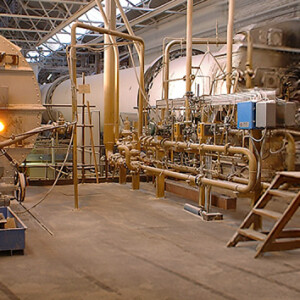(268) Time Machine
In 1917 the British Aluminium Co. began the construction of an alumina factory in Burntisland, Fife. Bauxite was imported by sea and converted to alumina trihydrate by means of the Bayer process, and then calcined in kilns to produce alumina powder. This was transported by rail to smelters in the Highlands where it was converted into aluminium metal. Over the years, as the process at Burntisland improved and markets changed, the output from the factory became used more in chemical applications than metal production, and could be found in products as diverse as toothpaste and spark plugs. The factory was expanded in many stages over the years, culminating in the installation of a Superfine plant which produced high quality specialist products used in, amongst other things, the manufacture of coated papers. However, in 2002 the factory fell victim to economic realities and after more than a century of alumina production the plant was closed and subsequently demolished. In the closing days I found a collection of glass and acetate photographic negatives hidden away and forgotten about in the corner of a store room. The images were taken by the works photographer(s) and showed some of the construction and operation of the factory from 1917 through to the early 1980s. I was given custody of the collection and gradually digitised what eventually amounted to over a thousand images. I spent a couple of hours today revisiting some of the images and reprocessing the original RAW files to reveal a little more of the detail that was captured on glass plates around ninety years ago. The main image is a view from 1931, of work to install a second rotary kiln alongside the first kiln, which is housed in the building behind. The building was later extended to enclose No.2 Kiln and then again in later years when a third kiln was installed. The extra is a very much less detailed image from the 'flame end' showing the same kiln on the right, with No.3 kiln on the left. This is one of the occasions when I again regret abandoning 35mm photographic quality for the low resolution convenience of digital cameras.


Comments
Sign in or get an account to comment.


